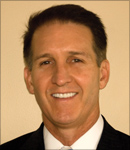As we all know (as much as we may hate to admit) California has often been ahead of the times. It is the state that gave birth to the personal computer, punk rock, and martinis after all.
California has also often been the first to push new innovations in energy technology, like solar and wind. So it is no surprise that in October 2013 California became the first state to pass legislation with aggressive energy storage targets: 1,325 megawatts (MW) by 2020.
According to the California Public Utilities Commission (CPUC),1 the reasons for the energy storage mandate:
- Increase energy storage at the grid level will optimize the grid, including peak reduction, contribution to reliability needs, or deferment of transmission and distribution upgrade investments
- Integrate renewable energy
- Reduction of greenhouse gas emissions to 80 percent below 1990 levels by 2050, per California’s goals.
Basically, the goal is to make it more efficient and environmentally friendly for California’s big three investor-owned utilities to meet their energy demands. For instance, if you think about a gas plant that is 100 MW in size with a minimum capacity of 50 MW, it can only vary in energy output from 50 to 100 MW. If you take that same plant and use an energy storage solution, the 100 MW plant can now discharge at 100MW but also absorb at 100 MW, so it now has a range of 200 MW – effectively doubling its power potential.
What is the Mandate?
The energy storage target of 1,325 megawatts of energy storage by 2020, including renewable energy generated from solar and wind, is a product of Commissioner Carla Peterman’s groundbreaking proposal that was approved by the CPUC. The targeted amount is approximately the amount of energy used by one million homes in a year. Utilities must begin quickly, with a mandate to buy a combined 200 MW of energy storage technology by the end of 2014.
The utilities impacted by the mandate are Pacific Gas and Electric Company, Southern California Edison, and San Diego Gas & Electric.
The mandate is technology neutral, meaning the utilities can choose from a wide variety of energy storage technologies and approaches available. However, there are still certain logistics and processes that need to be developed. The installation of energy storage solutions comes with the caveat that projects need to be reasonable in cost. In the short term, this will be determined by evaluation software tools, but eventually a protocol will be used for benchmarking and general reporting purposes. But this still leaves the questions of what is considered ‘cost-effective?’
The Big Picture: Renewable Energy
There is a tremendous need and push for the integration of renewable energy into our power grid as we attempt to phase out fossil fuels like coal and oil. Evidence of this push can be seen in the California Renewables Portfolio Standard. This program, the most ambitious of its kind, requires investor-owned utilities, electric service providers, and community choice aggregators to procure 33 percent of total energy from renewable sources by 2020.2 Despite this goal already being aggressive in nature, there are many legislatures pushing to increase that target.
However, the fossil fuels we are replacing with renewables are not just forms of energy, they are forms of stored energy. Renewables like wind or solar are pure energy and considered variable generation sources. They are intermittent in nature and hard to predict because they lack the energy storage aspect of fossil fuels. The inability for renewables to match demand with the fluctuating supply can reduce the stability of the grid. Every utility ultimately wants to smooth peak demand and have a good load factor in order to supply electricity as efficiently as possible. In order to replace fossil fuels, it is time to start thinking about how to add storage capabilities to renewable sources.
Integrating energy storage into the grid is the only way to make renewables a viable, sole energy source, mitigating intermittency of solar, wind and other sources. It also solves many other problems along the energy supply chain: T&D deferral, demand response, power quality & reliability, and frequency control.
So what are California (and other) utility companies thinking about today?
Utility companies have a big learning curve when it comes to energy storage, and some big investments in pilot programs ahead. Here are the three areas that are likely on the top of their minds.
- Power quality: Typically utilities must maintain their power to a frequency of 60 Hz in the US. With current systems, utilities experience energy loss as demand for energy oscillates above and below this frequency. Energy storage can help utilities smooth frequency to meet the 60 Hz cycle at all times.
For example, flywheel systems use a kinetic, or mechanical battery, spinning at very high speeds to store energy that is instantly available when needed. It works by accelerating a cylindrical assembly called a rotor to a very high speed and maintaining, or storing, the energy in the system as rotational energy. The energy is converted back by slowing down the flywheel.
Another example is advanced battery technology, which is able to store a large amount of energy for longer lengths of time, and is often used for power-critical grid applications.
Finally, super capacitors have the ability to store energy and recharge in seconds. Often used in electric cars, super capacitors are typically composed of highly porous carbon that is impregnated with a liquid electrolyte.
- Bridging power: Energy storage can help transition from low output when demands are low ramping up to higher levels of output during peak hours. For example, high-energy super capacitors, lead acid batteries, and flow batteries can store energy for 3 to 4 hour period and discharge very quickly.
Current battery technology allows for the production of hybrid, long-life lead-acid energy storage devices. It combines the fast charging rates of an ultracapacitor technology with the energy storage potential of a lead-acid battery technology in a hybrid device with a single common electrolyte. It can store energy and then release it very rapidly.
- Energy management: Energy storage technologies can shift power from one time period to another. So if you store energy at night you can discharge in hot afternoon.
For example, the latest thermal energy storage tanks can store renewable energy, like wind and inexpensive night-time electricity, in the form of ice for use during peak demand periods.
Or there is pumped hydro technology, which uses off-peak electricity to pump water from a low level reservoir to higher elevation. During periods of high demand, the water is released through turbines to produce electrical power to meet peak demand without over-stressing the power grid.
Distributed energy storage versus grid energy storage
Energy storage can exist anywhere along the energy supply chain, from the plant to distributors all the way to the end users. Today, the most common form is at the end user, otherwise known as distributed energy storage. For example, many commercial buildings can use thermal energy storage to store ice for cooling of the building at a later time. This has proven to be an extremely affective and reliable method for avoiding charges associated with peak demand hours.
This type of storage can count towards the total amount of storage for the California utilities; however the rules for how it will be counted have not been completely finalized. With the mandate, CA legislators are also envisioning a great increase in grid energy storage, or storing energy within the electrical power grid itself. For example if a power plant production exceeds consumption it can store excess energy for use at a later time – thus production can be maintained at a constant level, with little need to ramp up and down based on demand.
Similar mandates around the world & industry outlook
Today the percentage of energy storage capacity to power created and used globally each year is extremely low. According to the Electric Power Research Institute (EPRI), currently pumped-storage hydroelectricity is the largest-capacity form of grid energy storage available, accounting for more than 99 percent of bulk energy storage worldwide, approximately 127,000 MW in 2012.
However, there are many initiatives globally to increase that number in addition to the CPUC mandate in California. According to a recent article in Environmental Protection, New York will be the next state to consider such a mandate.3 In New York, where real-estate is a premium, the use of distributed energy storage illustrates end users are willing to invest in storage technologies. Already there is over 20 million square feet of New York City office space cooled by ice-based thermal energy storage.
However, the attractiveness of energy storage extends much further south as well. In mid-December 2013, the Puerto Rico Electric Power Authority and the island’s main utility released new minimum technical energy storage requirements for renewable energy projects, which states that new renewable energy projects incorporate energy storage equivalent to 30 percent of the project’s nameplate capacity for 10-minute frequency regulation applications and 45 percent of the project’s capacity for one-minute ramping control.4
Final Thoughts
While California may be the first, others will follow. And this is a very good thing. Whether it is thermal energy storage, pumped hydro, batteries or flywheels, integrating energy storage into the grid is the only way to make renewable energy a viable option for our future, while at the same time solving some of our biggest challenges related to T&D deferral, demand response, power quality & reliability, and frequency control. California’s mandate of 1,325 MW of energy storage is equivalent to the amount of used in one million homes in one year. That’s more homes than there are people in San Francisco, no small feat by any means. But if every city had a similar, or even more aggressive, mandate, think of the benefits it would create.
About the Author
 Mark M. MacCracken is the former board of director’s chair for the U.S. Green Building Council and CEO of CALMAC Manufacturing Corporation, which is the largest manufacturer of thermal energy storage equipment in the world, with over 4,000 installations in 37 countries.
Mark M. MacCracken is the former board of director’s chair for the U.S. Green Building Council and CEO of CALMAC Manufacturing Corporation, which is the largest manufacturer of thermal energy storage equipment in the world, with over 4,000 installations in 37 countries.
1 CPUC Press Release: http://docs.cpuc.ca.gov/PublishedDocs/Published/G000/M079/K171/79171502.PDF
2 CPUC Website: http://www.cpuc.ca.gov/PUC/energy/Renewables/Index.htm
3 Environmental Protection: http://eponline.com/articles/2014/01/22/ny-working-hard-to-catch-up-with-cas-energy-storage-requirements.aspx
4 Smart Grid News: http://www.smartgridnews.com/artman/publish/Technologies_Storage/Puerto-Rico-mandates-energy-storage-for-all-new-renewable-development-6300.html/#.UuBY4KWtvw4








